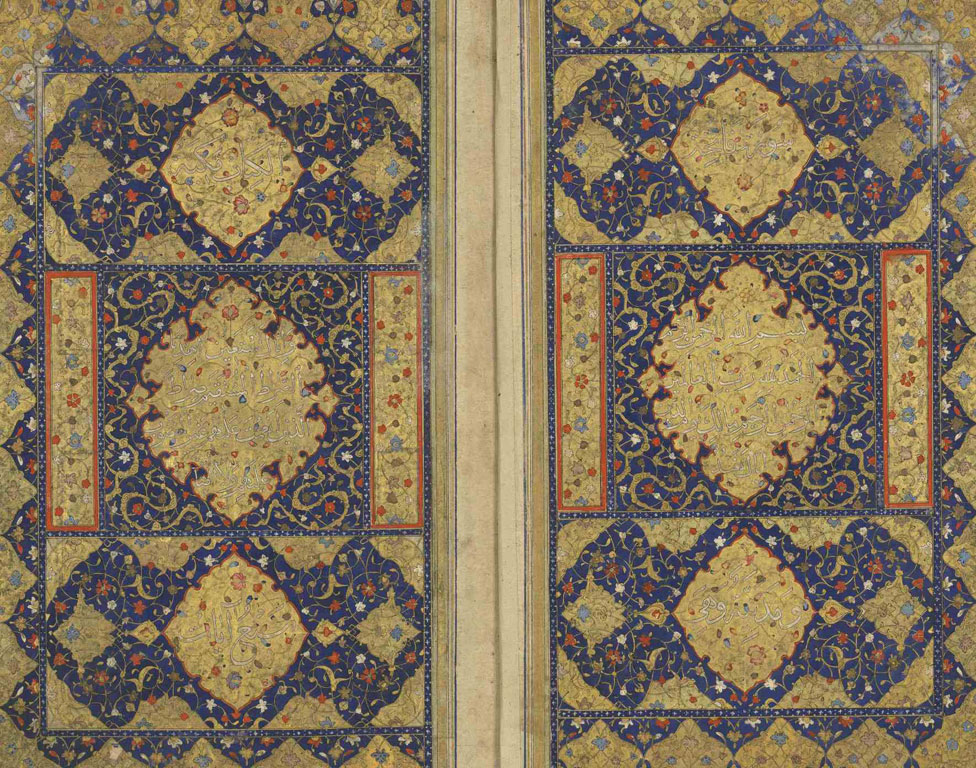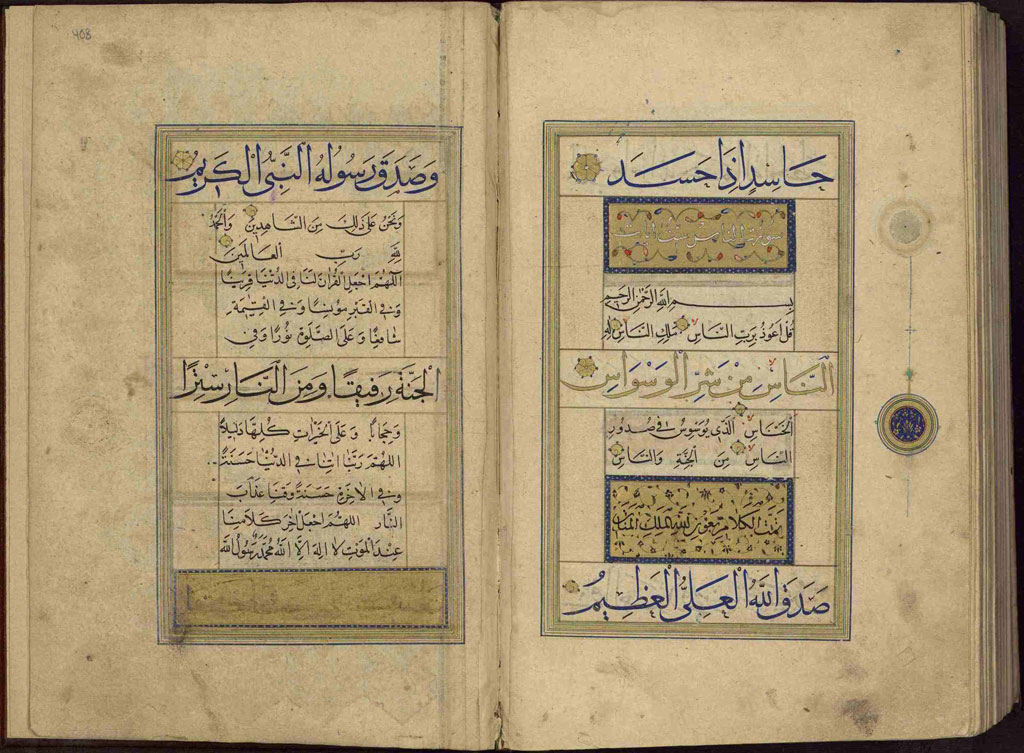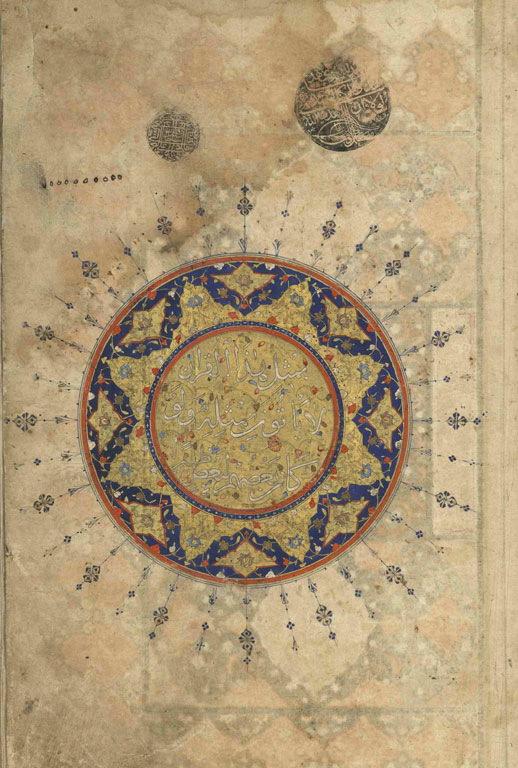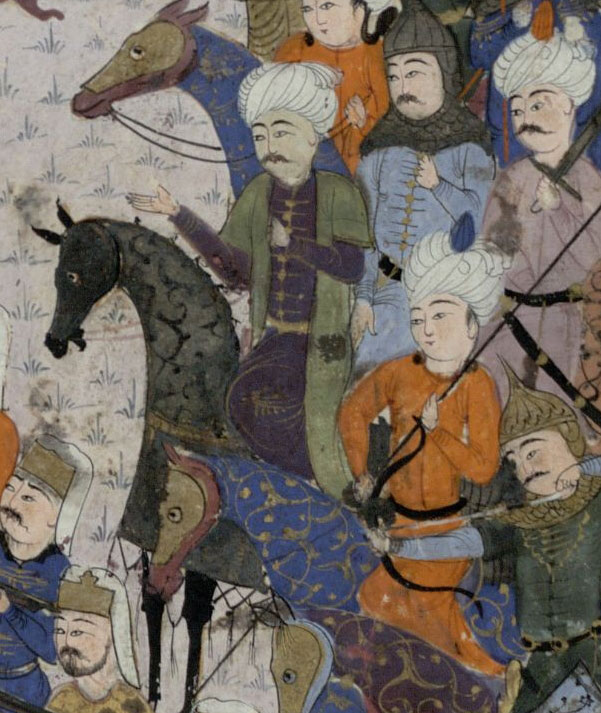-
THE SHIRAZI QUR’AN
This Shirazi Qur’an, dating from the early 16th century, was most likely commissioned for the Safavid court in Tabriz, Iran. The Qur’an is richly illuminated with gold, lapis lazuli and dark orange and was clearly considered a precious manuscript. Shown here is the opening chapter of the Qur’an.
 The Shirazi Qur'an, Iran, early 16th century, NLI
The Shirazi Qur'an, Iran, early 16th century, NLI -
BETWEEN SHI‘A AND SUNNAH
Beyond its beauty, the manuscript carries a dramatic history. The original Shi‘i scribe included the line, “Ali is the beloved of God (‘Ali wali allah), in his concluding prayer. However, this reference to 'Ali, cousin and son in law of Muhammad, and his rightful successor according to Shiʿii Muslims, was covered over in gold paint when the Qur’an passed from Shi‘i to Sunni hands.
 The Shirazi Qur'an, the concluding prayer with Ali's name, covered in gold
The Shirazi Qur'an, the concluding prayer with Ali's name, covered in gold -
AT THE HANDS OF THE OTTOMAN SULTAN
From the smaller of the two seals on the manuscript’s front, we can surmise that the Qur’an passed into the hands of none other than the Ottoman Sultan Selim ibn Bayazid (r.1512-1520), who vanquished the Safavid Persians in the Battle of Chaldiran Valley, on the border of Persia and Azerbaijan, in August 1514, and then seized the treasures of Tabriz for his collection in Istanbul.
 The Shirazi Qur'an, Iran, early 16th century, Two seals on the manuscriptΓאשs front, NLI
The Shirazi Qur'an, Iran, early 16th century, Two seals on the manuscriptΓאשs front, NLI -
THE SELIM NAMEH MANUSCRIPT
An outstanding illuminated description of the Battle of Chaldiran Valley and its aftermath is found in another manuscript of the Islamic collection at the NLI. The Book of Selim (Selim Nameh), a Turkish epic poem on the heroic deeds of Sultan Selim, was composed shortly after his death by one of his companions, the Kurdish Emir Shukri Bey Biltisi, on commission from Selim’s son, Suleiman (known as “the Magnificent”). This splendid manuscript, completed in 1524, includes a double-page miniature (121r-122v) depicting the battle.
, manuscript-1524, NLI.jpg) Shukri Bey Biltisi, Selim Nameh (The Book of Selim), manuscript-1524, NLI
Shukri Bey Biltisi, Selim Nameh (The Book of Selim), manuscript-1524, NLI -
SULTAN SELIM AS THE DEFENDER OF ISLAM
The miniature makes use of religious symbolism – Sultan Selim I, on horseback, is dressed in the mantle of the Prophet Muhammad, implying that it is he who defends true Islam, that is, the Sunni tradition. Above him, a flag flies with the legend, “Victory from Allah and redemption at hand.” There is no indication that the Shah and his army are Muslims, but rather, they are dressed like pre-Islamic Persian soldiers.
 Sultan Selim on horse
Sultan Selim on horse